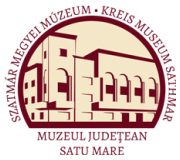Marta, Livius et al.: The Late Bronze Age Settlement of Nyíregyháza-Oros „Úr Csere” (Satu Mare, 2010)
VIII. Conclusions. Nyíregyháza-Oros site and its significance for the reearch of the Late Bronze Age
cropolises include „later” forms and ornaments, characteristic to the RBD and early HA1 periods330. In both sites, the Suciu de Sus331 imports can be considered as belonging to the classic phase of the culture. On the other hand, as seen in the chapter dedicated to the pottery analysis, as far as Oros settlement is concerned, the closeness with the chronological horizon following the Hajddbagos-Cehăluţ group cannot be eluded. This could be inferred for some types of vessels (bowls with pronouncedly shaped shoulder or amphorae), ornaments (thick vertical channelling, horizontal channels on the neck of the vessels) but also in the presence of some dichromic fired pots, black on the outside and brown-brick on the inside. Based on these elements, it can be invoked a certain chronological proximity with the site of Suplacul de Barcău-„Lapiş”, where are present a number of late elements, which appear also in the necropolis of Lăpuş332. The pottery from Biharea presents also some secure elements for a recent dating, based on the presence of the import materials of Igriţa, Cruceni-Belegis333 or Lăpuş334 type. In the Nyír area, the pottery of Oros has analogies in the discoveries from Nyirlugos and Nyíregyháza-TESCO, and Shell Petrol Station respectively335. The material of the last two sites includes, however, a larger number of vessels specific for the late Reinecke BD stage and the early Müller-Karpe HA1 one. Therefore, in the case of the settlements researched in the area of the TESCO store and of the Shell Petrol Station of Nyíregyháza, there is evidence for a possible more recent dating than in the case of the Oros settlement. For the Hajdú-Bihar area, we could mention as an analogy the deposit of vessels from Debrecen, dated during the RBD period336. The imports discovered in the settlement of Oros include materials of the Suciu de Sus, Igriţa, and Piliny type and elements specific for the Kosice basin. They can be used for a better chronological correlation of the site by setting certain convergences with these neighbouring cultural environments. The presence of a cup of Suciu de Sus type in the settlement of Nyíregyháza-Oros 330 Kovács 1967, Pl. 11-13. The materials from the Nyíregyháza-Bujtos and Morgó sites are under processing, but the materials specific for the Hajdvibagos-Cehăluţ group is very numerous, fact which does not raise question marks as to their cultural assigning. 331 Kovács 1968, PI. 11/1. 332 Kacsó 1997, p. 88. 333 Dumitraşcu 1994, p. 109. 334 Dumitraşcu 1994, p. 106, Pl. XLIV/2; XLV/8. 335 Nagy 2005; Nagy 2007. 336 Poroszlai 1984. 67
